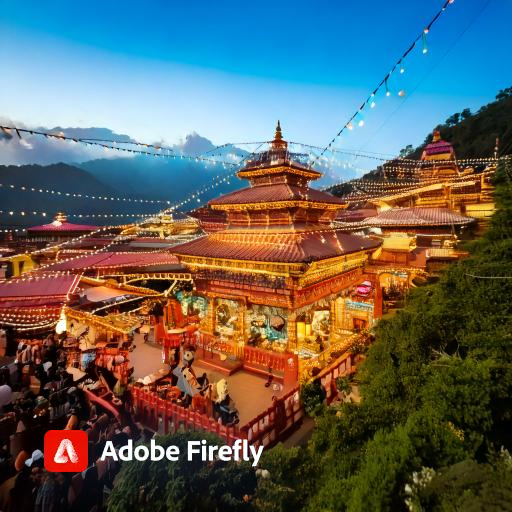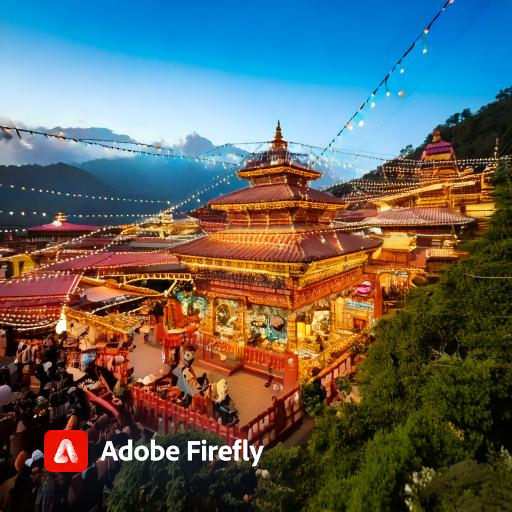Newari Culture is one of the most colorful and varied traditions of Nepal. With its roots going as deep as centuries into the pages of history, Newari traditions represent a confluence of art, religion, and social practices that shaped the Kathmandu Valley. From the intricate Newari traditional dress to the mouth-watering food of Newari culture, every element reflects the richness of their cultural identity.
In this blog, we explore different aspects of Newari culture: from clothes and food to unique festivals and wedding rituals.
Newari Traditional Dress: Seamless Balance of Elegance and History
The Newari traditional dress is an example of how well the community does in craftsmanship and detailing. Men and women have distinctive attire that portrays their rich heritage:
Male Dress: The bottom wear of Newar is considered as “Haku Patasi” in males, which is a black or dark-colored loincloth. Along with this, there is a white shirt also known as “Gunyu”. Along with this dress, Newari men also wear a cap as part of their cultural attire known as “Topi”.
Traditional Attire for Women: The traditional attire among the Newari women is known as “Haku Patasi”; it is a black sari that contains red borders with a blouse. “Gunyo Cholo” is a formal attire worn by them during special occasions and at Newari weddings and festivals.
Gold and silver ornaments and beautifully designed ornaments are symbolic in their culture and hence form an important part of the bride’s attire.
Cuisine of Newari Culture: A Foodie Paradise
Food plays one of the most vital roles in the traditions and customs of Newari. The food is well-known for its bold flavor and an eclectic mix of ingredients. During any celebrations or festivals, it plays an integral part. The following are some of the famous dishes:
– Samay Baji: A ceremonial platter containing beaten rice, barbecued meat, pickles, and lentil pancakes. It is served on festivals and any auspicious occasion.
-Yomari: Sweet dumplings made with rice flour and molasses, eaten during the festival of Yomari Punhi. Bara: Newari pancakes made of lentils, normally served with meat or egg topping. Newari cuisine is as diverse as its people, a reflection of centuries of influence from Tibet, India, and local Nepali food.
Newari Jewellery and Ornaments: Symbolism and Craftsmanship
Newari women are especially famous for their intricate jewelry and elaborate ornaments. Some of the major ones worn during festivals and weddings are as follows:
-Tikma: A big, traditional, Newari, gold necklace.
-Inar: Artfully designed earrings.
-Jantar: A small, intricately carved gold amulet that women wear for protection.
Each ornament holds historical and cultural significance to symbolize different facets of life, wealth, and spirituality.
Newari Festivals: Celebrating Life and Culture
The rich tradition & cultural resonance of the Newari culture consists of various festivals and rituals, a blend of religious beliefs, and customs passed down from ancient times. Some of the major Newari festivals include the following:
-Indra Jatra: The god of rain, Indra, is celebrated in normal courses in Kathmandu Valley with masked dances and chariot processions.
-Dashain and Tihar: While Dashain and Tihar are celebrated throughout Nepal, they have a special Newari tradition wherein families get together and offer to the gods.
-Mha Puja: Unique Newari worship of the self, performed during the New Year according to the Nepal Sambat calendar.
These festivals showcase not only the belief of Newari culture but also help to safeguard the cultural fabric of their community.
Newari Wedding Rituals: Traditions and Spiritual Blend
A Newari wedding is quintessentially traditional, and the rituals performed bespeak much about the attachment of the community with its culture. Some of the common rituals involved in a Newari wedding include:
-Ihi or Bel Bibaha: The pre-wedding ritual where young Newari girls are made to marry a Bel fruit, signifying eternal purity.
-Janko: It is one of the life cycle rituals concerning events such as weddings; the bride is attired in her best Newari cultural dress and jewels.
Thereafter, there is a ritualistic preparation of food known as Sagun prepared with five symbolic items comprising fish, egg, meat, lentil pancake, and alcohol and is believed to ensure prosperity for the bride and groom.
Newari wedding culture comprises a tinge of both Hindu and Buddhist traditions, therefore making it unique for the participants.
Art, Tattoos, and Architecture
Newari Culture:
In Newari traditions, art and architecture are considered to be of immense significance. Starting from ancient temples, the architectural wonders of the houses of the Newar people can also be seen in intricately carved wooden windows. Most of the houses have Newari art depicting deities and nature in a symbolic way.
Tattooing is also considered an aspect of the Newari culture. Most of the Newars, especially the women, get their bodies tattooed with sacred symbols, believing that the tattoos would protect and bless them.
History and Beliefs of the Newar People History is related to the Kathmandu Valley itself, over more than 2,000 years ago. Since then, whatever dynasties have existed and whatever political changes have happened in Nepal, the customs, language, and rituals of the Newars have been kept intact.
Pardon-Thomas Newari, also known as Nepal Bhasa, remains the carrier language of the identity of the Newar people and the medium through which Newar culture and tradition are preserved. While the Newari culture has been influenced both by Hinduism and Buddhism, its beliefs represent a combination of animism, ancestor worship, and local deities.
Conclusion: Preserving Heritage-Newari Traditions
Various manifestations of the rich and diverse history of Nepal are preserved through Newari culture and traditions. The cultural traits, starting from their traditional dress to intricate jewelry and the continuation of Newari wedding rituals even in present times, mark the growth of the culture in mention.
Whether it is going through the festivals of Newari people, enjoying the food of Newari culture, or simply being fascinated by the architectural beauty of Newari houses, the Newari traditions provide a gateway to one of the oldest and most vibrant cultures in Nepal.


